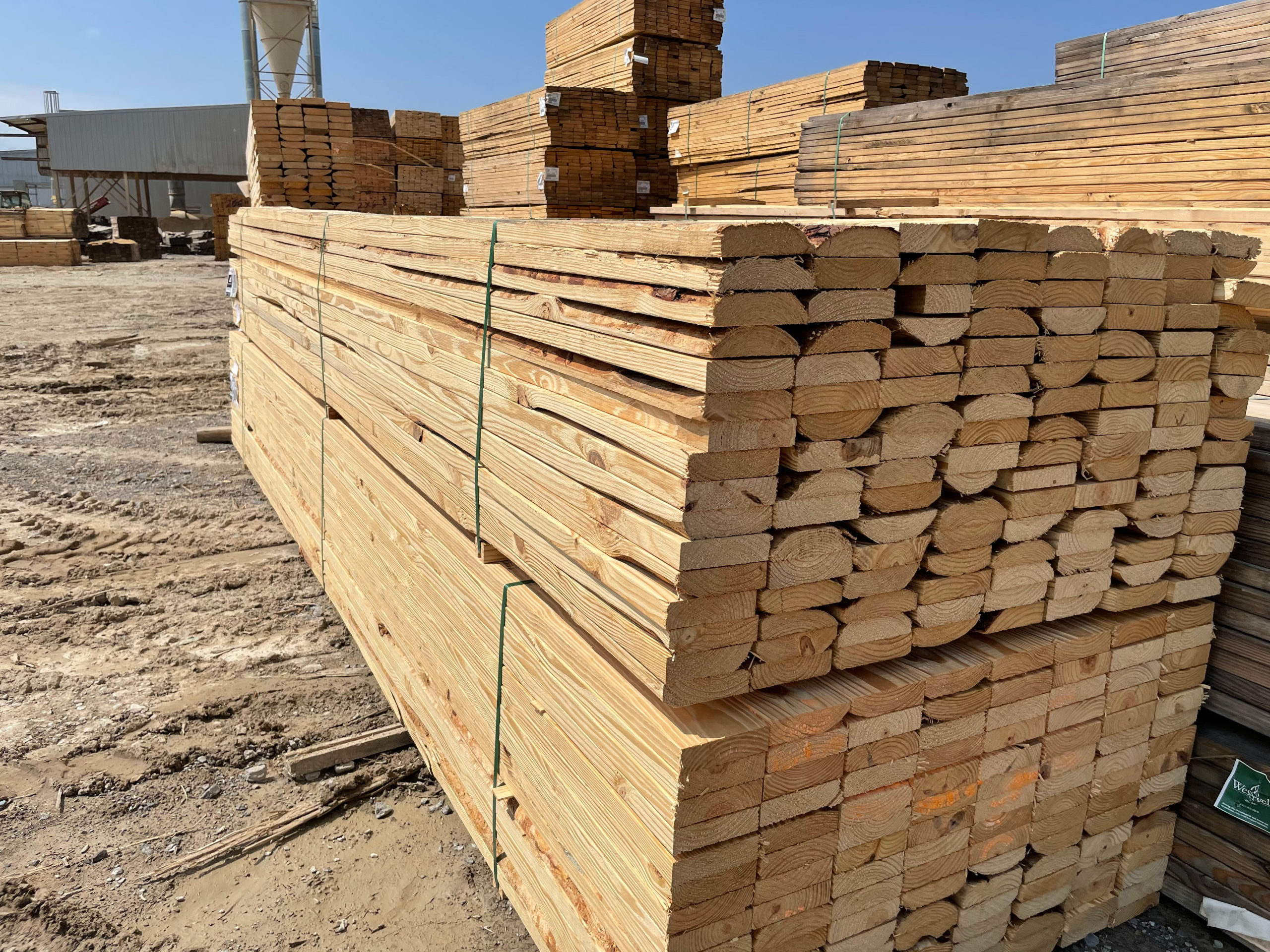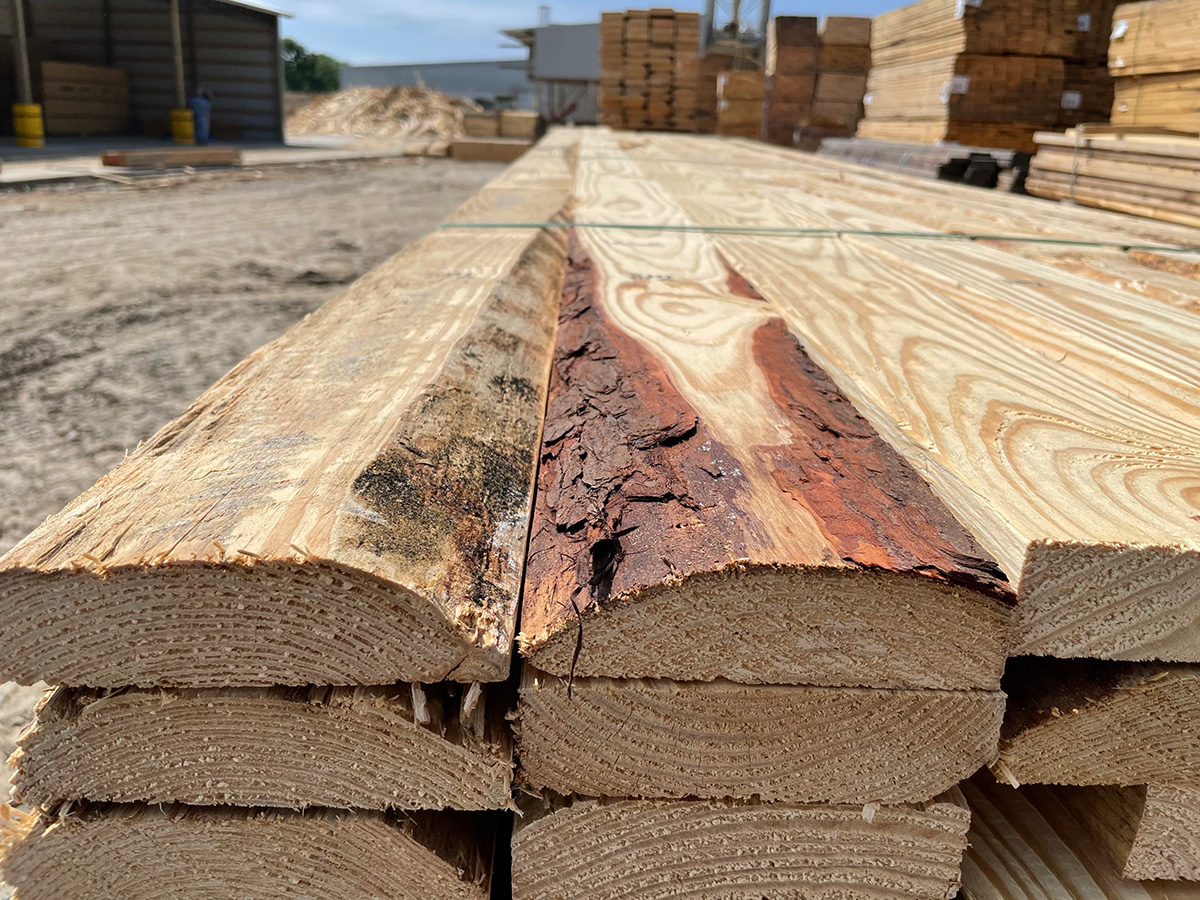Have you ever come across some ugly lumber? The wood probably still had small amounts of bark, knots, and had rough and rounded edges. Although this may be concerning to some lumber buyers, for manufacturing applications this ugly lumber is as good as gold.
For many manufacturers new to the lumber market, however, coming to terms with the usefulness of ugly lumber may take some convincing. Luckily, we’re experts on ugly lumber. After all, we use it every day to build industrial wood packaging!
By addressing some manufacturers’ most pressing questions head-on, we believe we can make a fan of ugly lumber out of even the most risk-averse manufacturers.
That’s Ugly Lumber! Why Does it Look Like That?
In the lumber industry, few things are consistent on a day-to-day basis. Rising and falling prices, availability issues, and even tariffs can start or stop the flow of lumber from woods to the end buyer. Ugly lumber is always being produced, however, and many in manufacturing have come to rely on it.
Although sawmills vary in their practices and techniques, when working with wood, there’s no way to avoid byproducts. Take Southern Yellow Pine for example.

Notice the rough and prickly edges? Despite this, this ugly lumber can still be used effectively in a wide variety of industrial applications.
When pine timber gets to a sawmill, it essentially just looks like a log. Other than lacking branches and pine needles, the log is still in its natural state. As the SYP gets put to the saw, mill workers use high-precision technology to figure out which cuts to make to get the best wood possible.
Although recent advances in mill technology have seen an improved yield of high-grade lumber, there’s still no way to get all of the cuts to look the same. Some boards have bark, while others have knots and indentations, this ugly lumber is almost impossible to avoid creating. Although this lumber may not be suited for furniture or cabinetry, it’s perfect for industrial applications across many different manufacturing sectors.

Rounded edges and bark may disqualify this lumber from some uses. Luckily, this ugly lumber can still be used to create sound and sturdy wood packaging!
Is Ugly Lumber Still Strong?
Many assume that because ugly lumber looks pretty rough, it won’t be up to the industrial pressures that manufacturers demand of their wood – this simply isn’t true.
Going along with our Southern Yellow Pine example, industrial SYP, or “ugly lumber” as we’ve come to call it, is still extremely strong. Even if the wood itself may have lackluster looks, its strength isn’t dependent on visuals by any means.
SYP as a species group has an impressive strength-to-weight ratio.
Meaning, that a single board of SYP lumber can withstand a significant amount of pressure. In industrial environments, this strength can prove to be invaluable when working with heavy products. Even though it may be ugly lumber, as long as the lumber is free of large cracks, rot, or excess wood mold, it can still be put to work by manufacturers around the globe.
What Can it Be Used For?
Ugly lumber isn’t going to be used to build a picket fence, but it can prove useful in a wide variety of industrial applications.
Dunnage
Industrial lumber is frequently used as dunnage by manufacturers and truckers across the globe. Not needing to look good works for industrial lumber in this environment. With heavy industrial equipment consistently leaning on the wood, products putting pressure on the lumber in transit, and the overall constant use, ugly lumber makes for great industrial dunnage.
Pallets
As one of the most frequently, and heavily, used industrial lumber products, pallets surely take a beating during their lifetime in transit. Unless manufacturers are in certain industries that require sterile pallets, such as food and beverage or pharmaceuticals, ugly lumber makes for fantastic industrial wood packaging.
With the same strength as their clean-cut counterparts, ugly lumber can provide a cheaper and equally durable pallet.
Crates
Although primarily constructed out of wood panel products, the joints of crates are still made of lumber. In manufacturing, often this is ugly lumber! Despite not being pretty, this industrial lumber provides a sturdy joint for the corners of the crates. This lumber allows this wood packaging to be the most effective.
Banding Groove
If anything, ugly lumber can be made into banding groove. With the additional cuts that are made to this specialty dunnage, chances are that this ugly lumber won’t look so ugly after that! With its specialty grooves, ugly lumber can play an important role in protecting pallets from harmful top loads and pallet strapping.
Ugly Lumber is Valuable!
Even though it may not look the best, ugly lumber is extremely useful. Whether it’s being used as dunnage, made into a pallet, a crate, or even banding groove, ugly lumber can be used effectively in manufacturing environments. So, the next time you see some ugly lumber, don’t write it off, think of the possibilities!



![[PRESS RELEASE] Conner Industries Announces Major Guardian Packaging Expansion](https://conner.b-cdn.net/wp-content/uploads/2024/10/Guardian-Packaging-Expansion-500x383.jpg)
![[PRESS RELEASE] Conner Industries Announces Website Dedicated to Integrated Packaging Division](https://conner.b-cdn.net/wp-content/uploads/2024/05/Conner-Packaging-Blog-500x383.jpg)


